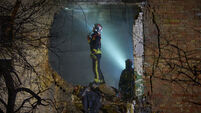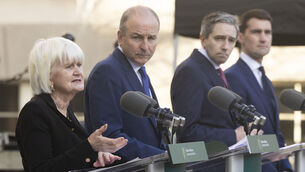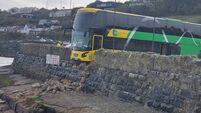Art of protecting our built and natural heritage
Exquisite paintings glow from walls in the salon and library.
From the pillared hall there are glimpses of the terraced lawns, the orangerie, the walled gardens and the famous arboretum. Beyond these lies the frame yard, typical of the 19th century combination of technology and science with knowledge of aspect, shelter, light, climate and horticulture, and the recent subject of the largest glass-house restoration project in Ireland.
These aspects of the achievements of the Irish Heritage Trust, now in its fifth year of existence, reflect the management of its single property in difficult times. Diluted by severe cuts in its budgetary allocation and deprived of the €35 million enabling funding, the Trust awaits the conclusions of the five-year review commissioned by the Department of Arts, Heritage and the Gaelteacht, to which submissions from interested parties were invited earlier this year.
“The Department’s issue paper for the review is brilliant,” says Kevin Baird, CEO of the Trust. “No matter what it said, we need to have a conversation about what has been found out after five years.”
Baird, who works with a team of four full-time staff, acknowledges that the initial targets have not been met, but is also able to explain just why things have not worked out at all as planned.
“Yes, we all hoped to be further down the road at this point, but even when we started we knew it was going to be an extremely long game.”
What they did not know was that within two years of its inauguration, the Trust, like so many other institutions, would be a victim of the economic crisis during which, as Baird puts it, “the whole game changed”.
Created after Dr Terence Dooley of NUI Maynooth had laid out the status of Ireland’s architectural inheritance in a compelling case for state intervention, the Trust was to take ownership of threatened nationally important properties which would be supported by a maintenance endowment.
The endowment would have to be raised through state contributions and private donations benefiting from tax incentives introduced in 2010.
Tax incentives secured the donation to Fota by the McCarthy family and AIB of the important Wood collection of 18th and 19th century Irish landscapes.
However the acquisition of the house and the art collection were funded entirely by the exchequer through endowment, a capital grant and tax relief, to a total value to date of €10.6m.
The department notes that apart from the donation of the Wood collection “no significant private funding has emerged to support the work of the Trust over its first five years”.
“Given the circumstances”, asks Baird, “have we created an alternative way of working in heritage management that is successful? “Our view is that yes, we have. We have created a model here at Fota and it works. We’ve had to compete for money from, for example, Fáilte Ireland which supported the frame yard restoration, or the Heritage Council, whose support for the Fota Learning Zone was an investment in something completely new, addressing the issues of education, access and encouragement of a new audience. We’re participating in the Museums Standards Programme which offers professional training in the management and presentation of collections from record keeping to pest control, and gives an accreditation at the end of the programme.”
Because Fota is operating at a loss which is not sustainable, corrective measures have been taken, through rationalisation and the reduction of staff numbers.
Another problem is the role of the Office of Public Works (OPW) in terms of heritage protection and its planned transfer from the Department of Finance to Arts, Heritage and the Gaeltacht. Earlier this year the Minister for Finance approved an OPW designation of Annes Grove in Castletownroche as a heritage property.
This was one of the estates which the Irish Heritage Trust had been expected to acquire before the dramatic cut to its available funding; the designation indicates how the 2010 tax provisions allow a direct state body (the OPW) and a state-supported trust to compete for the same exemption.
While the Trust is still significantly dependent on public money, its operations at Fota, while not following the prescribed path, have been successful in themselves, not least in doubling visitor numbers to the house. Because property management without acquisition does not fit the original mandate, the question is whether the government should withdraw its support altogether, handing Fota House over to the OPW.
The question is can it afford that transfer which incidentally wouldn’t solve the wider problem of our remaining vulnerable heritage properties? Or should the government go with the Heritage Council’s submission to the departmental review that the Trust has developed “a refreshingly modern and innovative niche and forged links and partnerships that offer huge potential for development in the future”.
The department itself admits that the reasons for the Trust’s foundation ‘are as valid today as they were in 2006, perhaps even more so.’ It’s that validity which makes its conclusions so crucial not only for the future of the Irish Heritage Trust but for the national commitment to the protection of Ireland’s built and natural heritage.
















